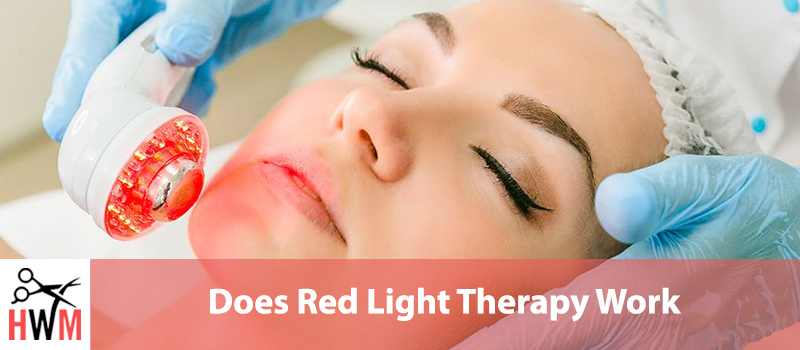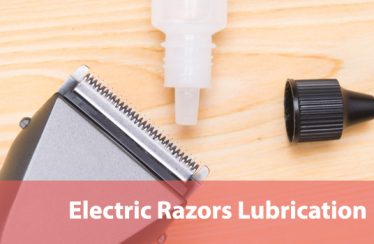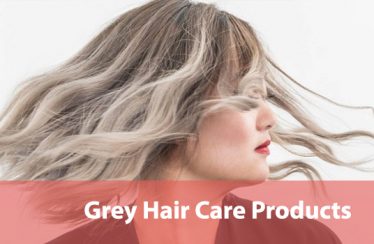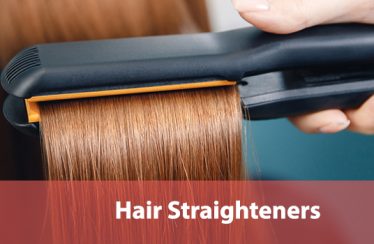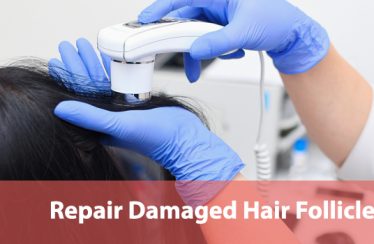Red Light Therapy may sound like the latest medical fad taking the internet by storm, especially given the long list of potential health benefits. It can be hard to believe that something as simple as a little light can have so many skin and other health benefits.
Of course, we were skeptical too, so we did the research to dig up the scientific studies that have been done on Red Light Therapy (RLT), so you don’t have to.
We’re going to talk about how Red Light Therapy is thought to work. We’ll talk about some other medical applications that light therapy, either in a specific color range or polychromatic light, has proven effective in treating and why scientists are starting to explore the effects of light on the body.
Most importantly, we’ll talk about what the science about RLT says for its effectiveness and possible uses.
We’ll repeat this a couple of times when it’s most relevant, but you should be aware that a lot of the science we’re talking about in this article is recent and replication studies haven’t been done to prove a lot of the original claims.
Plus, some studies do disagree with the growing consensus on light therapy in general and red light therapy in specific.
We’ve done our best to represent the facts behind this possible skin treatment, but as with all new science, this new understanding of red light therapy is likely to change as we can more thoroughly study the effects.
- What Does Red Light Therapy Do?
- What are Light Therapies Already Being Used For?
- Why are We Studying Medical Uses for Light?
- What are the Proven Uses for Red Light Therapy?
What Does Red Light Therapy Do?
Red light therapy is still in the earliest phases for studies into why it has the effects and benefits it does, but we do know some of what it seems to do in your skin.
RLT is more effective than some other types of light or laser therapy in that it is rated to penetrate up to 8-10 millimeters into the skin, far enough to have an effect on the entire dermis.
As for how it creates a beneficial effect, exposing your skin to certain therapeutic wavelengths of red light is thought to encourage ATP production in the mitochondria of your cells.
We all remember that mitochondria are the powerhouse of the cell, ATP is the power. ATP is required for all cellular processes.
In your skin, specifically, it is thought that the additional ATP is put to use creating collagen. Collagen is one of the most critical proteins in the body, making up roughly 30% of all protein throughout your body.
Collagen is even more important in your skin, where it’s more like 70% of the total protein in your skin cells.
You’ve probably seen skin creams and facial masks that talk about their collagen-boosting power. That’s because collagen is critical to preserve skin health and appearance. Collagen provides a lot of the spring and flex in your skin and also helps it look clear, brightly colored, and full.
Lack of collagen is behind a lot of the skin processes we typically associate with aging like thin papery looking skin, wrinkles, sun spots, and looseness.
Healthier cells are also more resistant to damage and infection, which helps reduce the frequency and severity of issues like acne, windburn, sunburn, cold sores, and other skin irritations.
The main use of red light therapy that has been studied is for dermatology, looking at it’s effects on your skin or to a lesser extent your hair. However, it is also being considered for use in pain control, wound healing, inflammatory diseases, eliminating bacterial biofilms, and more.
We’ll go into more detail on the specific uses and the studies that have explored them a little later.
First, to help take light therapy out of the realm of science fiction and into the reality of modern health care, let’s talk about what we’re already using light to treat, and why medical science is starting to look closely at the beneficial effects of light.
What are Light Therapies Already Being Used For?
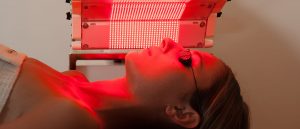
Unless you’ve used a specific light therapy you probably don’t know that we already use different types of light to treat a variety of issues and disorders today. Here are some of the most common uses for light therapy:
Blue Light for Jaundiced Infants
It’s incredibly common for babies to experience some level of jaundice. Before birth, a child’s blood-filtering needs are taken care of, in part, by their mom. So it takes a little while for their liver to catch up and start effectively filtering all the bilirubin (the blood component behind the yellow pigment typical of jaundice) out of their blood.
Most children will be just fine without intervention, but some children need additional assistance dealing with the bilirubin until their livers can keep up. It’s especially common for premature babies to require treatment.
Instead of doing something more invasive to treat or filter the bilirubin, the simplest solution is laying the baby under a specially designed blue light for a few hours.
The blue light helps break the bilirubin down into other compounds, effectively reducing blood concentrations. The resulting compounds are easier for your liver and kidneys to process, so it’s a fantastic, non-invasive, and highly effective treatment.
Light Treatment for Vit D Deficiency
Your dermis, the organ name for all of your skin, does more than protect your body from the elements. It is also involved in the production of vitamin D, a vitamin you need for a number of critical body processes.
The thing is, your skin only produces vitamin D when it’s exposed to sunlight, or similar light and certain areas like your stomach and legs produce more vitamin D than other areas of skin.
But we consistently cover our stomachs and legs throughout the day. Plus, seasonal differences and the angle of light not being ideal at the northernmost and southernmost latitudes, and we have a recipe for vitamin D deficiency.
You can treat deficiency by taking a supplement, but in extreme cases or for people who don’t want or don’t receive benefits from supplements, there is another option.
Simply increase your light exposure. Going outside does help, but when treating deficiency, it’s common to see people using specially designed lamps at home or going for the occasional tanning session.
Seasonal Effective Disorder
Season Effective Disorder is a condition where you begin to suffer from increased feelings of depression and anxiety in the darker colder months of the year.
The intensity of Seasonal Effective Disorder (SAD) and how long it lasts vary from person to person, but it can have serious life consequences.
Therapy and medication have both been used to treat SAD, and both are considered effective treatments. But you can also treat or boost an existing treatment for SAD by using a daylight lamp for a period of intense light treatment once a day.
Light is a signal to your body about the time of day, the season, and the amount of energy you need. It is directly linked to the production of some hormones and neurotransmitters in the body because it is one of the most reliable indicators of the day/night cycle.
While the exact mechanism of light in treating SAD isn’t well understood, it has been proven as an effective treatment and is in preliminary studies for use with other mental disorders as well.
Insomnia and Sleep Disorders
We mentioned in the last section that light is a critical indicator of the day/night cycle for your body. It makes sense, knowing that, that light can also be an effective treatment for certain types of sleep disorders and insomnia.
There are two main ways this works. The first is avoiding certain types of light and light in general when you are getting ready to sleep. Blue light, commonly used in computer and phone display lights, is less present at night.
So, avoiding blue light before you sleep can help signal your brain that it’s time to relax and go to sleep for the night.
The other effective option is using daylight lamps designed to mimic the light spectrum through the day to mimic things like sunrise and sunset, helping cue your brain through the day/night cycle even if you spend most of the day indoors.
These are only a few of the light treatments that are already in common use today. Red light therapy seems a little less strange knowing the other ways light impacts the body, doesn’t it?
Why are We Studying Medical Uses for Light?
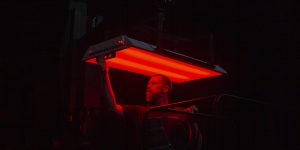
To understand why these light-based therapies are the real deal, it’s important to understand why we are studying the medical uses for light in the first place.
Part of the interest is driven by the already proven light therapies we discussed earlier. Once something has been proven as a potential new mode of treatment it generates a lot of interest because adding new methods and modalities to our current medical care can improve results and open up treatment to new populations.
Light therapies have also been proven effective without significant risk of side effects or unpleasant results.
But at the core, there has been a realization that all human beings are affected by light. We all absorb some light into our skin, and we all spend time in different wavelengths and colors of light. Now that we know that there are chemical changes in the body as a response to light it’s important to learn what affects different types of light have and how we can best optimize our spaces and our health care both.
While therapeutic light is usually tightly controlled intensity and wavelength, learning more about the effect of different colors of light also gives us insight into processes and reactions to our environment that are not well understood today.
What are the Proven Uses for Red Light Therapy?
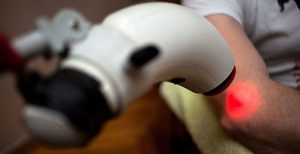
Most of the research into red light therapy has been done for uses within the realm of dermatology. It’s been evaluated as a skin treatment for various follicular disorders, acne vulgaris, stretch marks and cellulite, and other common skin problems.
This research is the most established, but it is still controversial in many ways. From the knee jerk reaction not trusting that light can be therapeutic to the few failed replication studies and studies that failed to report significant findings, there isn’t a total consensus in the medical field on any of these applications.
However, some of these treatments, including for skincare, joint pain, and as an anti-inflammatory therapy, do have FDA approval. There have been enough studies showing clinically significant positive results to earn FDA approval for those treatments and devices that most closely mirror the study conditions.
Some dermatologists offer RLT, as well as gyms and spas. There are also many in-home RLT devices design to target either skincare or joint pain an inflammation.
Those disclaimers aside, here are the most supported treatments.
As a Treatment for Acne
RLT has been shown to provide significant skin health improvement, leading to better appearance and texture, in multiple trials.
It has been proven on its own vs a control, and when compared to other light therapies and a control.
RLT is not the only light therapy that is effective for acne, but because each therapy has a different mechanism RLT may give you relief from chronic adult acne even if other light therapies like full-spectrum light or blue light, have failed.
We’ve already talked briefly about how RLT is thought to work, but it’s worth going into the specifics for this purpose.
RLT stimulating ATP production allows your cells to do more to build a protective barrier that prevents bacterial infection. While acne does not always begin with bacteria, bacteria often take advantage of the weakened skin to cause problems.
Once harmful bacteria are eating away at the contents of a clogged pore it’ll take longer for that zit or blackhead to heal and resolve on its own.
So protecting from bacteria can help minor skin issues resolve faster.
It also improves overall skin health, making it less likely for pores to clog in the first place, and can improve circulation to the area to further combat clogged pores and the buildup of dead skin or excess oil.
Wrinkles and Signs of Aging
RLT has also been studied to see if it has any effect on the changes occurring in your skin as you age. Naturally, as you get older, your collagen production goes down. Collagen, a key protein that makes up as much as 70% of the protein in your skin, is largely responsible for your skin’s elasticity and firmness, and can also play a role in creating an even, healthy, color and glow.
While the benefits we talked about in using RLT for acne are also at play for wrinkles and other signs of aging, there are other mechanisms of skin health and support that are more important in preventing and reversing the signs of aging.
The primary effect RLT seems to have in this area is that by stimulating ATP production in the mitochondria there is more bio-available energy at each of your cells’ disposal to create collagen.
Creating more collagen rejuvenates the skin from the bottom up, as opposed to anti-aging creams that add collagen on top to be absorbed into the skin.
It also has a similar circulation improving effect as rubbing a cream or lotion into your skin, the other major mechanism of anti-aging effects in anti-aging creams.
So RLT takes advantage of known anti-aging mechanisms within the body, it simply stimulates the needed result in a new way.
Joint Pain Relief
At the start of this article, we mentioned that we would talk about it when the science wasn’t settled or wasn’t thorough. While that has been true to some extent in all of the treatments we’ve mentioned so far, it’s especially important to bring it up here.
There is solid science backing RLT as a treatment for joint pain relief, particularly when inflammation is one of the main problems causing the pain in the first place. But, much of that science is still in need of replication, and some studies contradict the results.
So, there is some effect of RLT on joint pain and inflammation, but neither the mechanism, the extent and predictability of the effect, or it’s duration after treatment, are well understood.
That said, studies have shown significant pain-relieving effect on par with other alternative medicine therapies like acupuncture.
And since red light therapy is available via in-home devices that are designed to deliver either dispersed or targeted light, it’s available in more remote areas and to a much larger population than acupuncture or acupressure.
As a Treatment for Hair Loss
This is another case of the science existing but being very mixed. Some studies have shown strong positive results on restoring hair using RLT, others have shown skin improvement in the immediate area without restoring hair growth or health.
That said, it’s still something to bring up with your dermatologist if you suspect that you have or are starting to have male pattern baldness or another genetic form of hair loss.
RLT, like most other hair loss treatments, is not going to be able to assist in cases of chemotherapy or other medical causes of hair loss since the effective mechanism of the RLT, increasing ATP production and cell health, will not interfere with the effect of those types of medication.
Even if your dermatologist doesn’t have an RLT device in their office they will at least be able to direct you toward a high-quality FDA approved device to try it at home.
You can also look for a spa or gym that offers RLT. While gym and spa setups are often full-body RLT treatments geared toward improving overall skin health, they still allow you to test whether you get positive results for yourself.
Other, More Controversial Treatments
These are all in the process of being studied, but the results are either less positive or more contradictory than in treating the other conditions we’ve mentioned in this article. Consider these as possible uses and talk about the treatment with a dermatologist or doctor if you want to learn more.
Relieving Pain and Inflammation Associated with Arthritis
There have been a couple of studies done specifically on joint pain caused by arthritis.
None of these studies were terribly conclusive, and the results are contradictory, with some showing pain relieve but no condition improvement, and others showing both joint pain and overall condition improvement.
More trials are still to come, but for now, this is a possible treatment option for arthritis, but the science isn’t very strong, and the hypothesis is far from proven.
Psoriasis and Other Inflammatory Skin Conditions
Like with arthritis, RLT has been studied for use in treating psoriasis and related skin conditions. Some of the studies showed a strong positive effect reducing the appearance of psoriasis and speeding healing times, while other studies showed little or no statistically significant effects.
Again, talk to your doctor or dermatologist if you are interested in trying RLT for psoriasis or a similar condition, but this isn’t considered a solid treatment for those conditions, yet.
Conclusion
We started this article with a basic question, does RLT do everything it claims to. Our conclusion? It certainly has some therapeutic benefits in certain situations and for some people. But, the exact mechanisms aren’t proven, and the results themselves seem to vary quite a bit based on trial conditions, the device used, and the specific condition being treated.
While it does seem like the claims for what RLT can do are sometimes exaggerated, or preliminary trials and studies into new possible treatments are taken as proof positive before enough data is available, RLT also clearly has benefits for our skin, and maybe other tissues as well.
It is also an FDA approved method of treating some of these conditions, with FDA approved devices readily available on the market, so anyone can try RLT for themselves even if there aren’t trained medical professionals or self-care businesses providing the treatment.
It’s up to you if you want to give RLT a try, but we can confidently say that, at least in some applications, red light therapy works.
